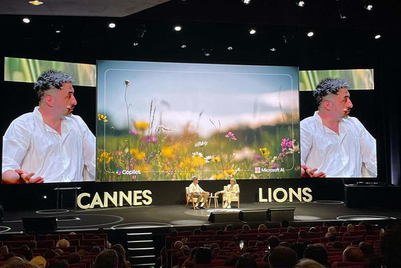
I have been buoyed by watching many businesses in our industry respond to an apparently lose-lose scenario with creative, practical and innovative thinking. Fabricators of stages and exhibition stands have switched to producing stand-up desks for staff working at home. AV companies have set up their own broadcast studios to serve the exponential growth of webinars.
Yet we are now seeing brands and organisers stepping back into the world of in-person events, especially with China gradually reopening shows and exhibitions, mainly for domestic participation.
New normal, new measures
For sure, the shows are returning, but with new measures to cope with changes. A recent concert in the UK that was designed for social distancing went viral. The outdoor venue featured 500 responsibly spaced platforms, each accommodating up to five audience members. Some said this ‘private experience’ ushered in a new era of live music.
We all know how powerful live events, tradeshows and exhibitions are in creating the memories, deep connections and raw emotions that build bonds and drive business. While no one can assure when live shows can fully resume, we can be certain that audiences will expect something better than what we had before—a more premium service with an emphasis on health and well-being.
As the evolution has already begun, what has become clear to us, the agency people, as we assist event organisers in restructuring to the current environment, is that the balance of health and economics must trickle down to every level. It is about assessing and reimagining a balance of accessibility, audience well-being, and the commercial objectives of partners.
So how should organisers evolve?
Borderless access is the key
There has been much talk about hybrid events in the context of making them accessible to remote audiences. However, there is also a lot to consider from an organiser perspective. New commercial models need to have live, hybrid and virtual streams for both in-city or remote attendees, sponsors and exhibitors. By making events more accessible and balanced by the utility of each channel, the more optimal the opportunity. That is, opportunity for audiences to engage, sponsors and exhibitors to conduct business, and for organisers to create revenue. These cannot be regarded in isolation from each other.
A recent hybrid event for Yonex provides a good example of high accessibility. As well as holding a traditional offline gathering for dealers to order the latest products and discuss new sales and development strategies, the brand was aware of the heightened importance of e-commerce platforms for brand-customer communications at the time. Therefore, they used the stable JD platform to make a real-time broadcast in China and abroad to drive further media and public awareness of the event. The strategy’s effectiveness is clearly shown in the results figures—one million live broadcast views and a media value of approximately RMB3 million.
The 2020 China International Fair for Trade In Services, held in September, is another example. Apart from the offline experience, the fair offered a 3D immersive cloud exhibition with around-the-clock access for exhibitors and visitors in China and abroad. In the 3D virtual booths, users had easy access to services such as private chats, live broadcast and intelligent customer service, regardless of their respective time zones.
Well-targeted content is more important than ever
Creating meaningful, relevant content that attracts an audience is always a struggle. It’s even more challenging when organisers are trying to adapt content to an environment that is constantly changing while everyone doubles down on digital.
More than ever, brands and organisers need to make use of unique audience insights or behavioural data to create more well-targeted content.
For online events, various analytics tools can help generate vast data about audience and interactions; for live events, event tech is the most helpful tactic. Blending as many digital touchpoints and data collection points as possible into the hybrid experience can help create a rich pool of compliant data, unlocking potential new content marketing strategies, commercial opportunities, and more powerful business matching.
Reimagining a smarter, safer event environment with contactless and touchless solutions
That rich pool of data is not just for compliant commercial use, but for managing risk. Organisers unavoidably must consider requirements for social distancing and risk mitigation in the new normal.
Contactless and touchless environments help organisers respond to the current situational environment by effectively managing the live site and venue while mitigating risk to attendees, exhibitors, venue staff and contractors. With the help of spatial planning, crowd monitoring and contact tracing tools, it can help exhibition and tradeshow organisers create safe environments for their customers—and regain confidence as they return to the offline world.
The event tech blended into live shows—from e-tickets, event apps and e-registrations to digital business cards exchanges and content consumption—adds up to organically create a seamless ‘contactless’ environment that considers audience well-being.
At this year’s Audi Auto Show, for example, an app pushed information to visitors about the car models in closest physical proximity. Rather than just installing digital banners, the application was considered as a smart data point that created a highly humanised experience while minimising cross-contact.
Live feeds to government agencies or health control rooms help to ensure organisers an active role in managing the balance of health and commerce for us as a society. This, coupled with new benchmarks for creating touchless environments, such as the use of concierge or door services, gesture-based interactive signage or thermal robots, adds another layer of risk mitigation and management. Responsibility is paramount.
Gregory Crandall is senior vice president, global activation team at Pico



.jpg&h=334&w=500&q=100&v=20250320&c=1)


.png&h=334&w=500&q=100&v=20250320&c=1)




.png&h=334&w=500&q=100&v=20250320&c=1)

.jpg&h=268&w=401&q=100&v=20250320&c=1)



.png&h=268&w=401&q=100&v=20250320&c=1)
.png&h=268&w=401&q=100&v=20250320&c=1)

